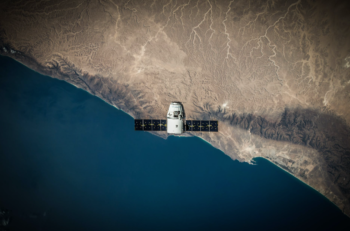The recently launched AST SpaceMobile’s BlueWalker 3 satellite, which has the largest commercial antenna system ever deployed into low Earth orbit (64 square meters when fully deployed), will have a harmful effect on astronomy, because it has become one of the brightest objects in the night sky. That’a according to a statement on Monday from the International Astronomical Union Center for the Protection of the Dark and Quiet Sky from Satellite Constellation Interference. At its brightest, BlueWalker 3 is almost as bright as Antares or Spica, which are the 15th and 16th brightest stars in the night sky, respectively.
In May, the FCC granted American Tower-backed AST SpaceMobile an experimental license that allows the company to test BlueWalker 3 satellite-to-phone connectivity in the U.S. at sites in Texas and Hawaii, Inside Towers reported. Once BlueWalker 3 is operational, the company plans to conduct testing on five different continents, in coordination with mobile network operators like Vodafone, Rakuten Mobile, Orange and others.
The satellite’s use of terrestrial radio frequencies also poses a new challenge to radio astronomy, the scientists added. “Besides their visible brightness, these new satellites, which serve as ‘cell phone towers in space,’ will transmit strong radio waves at frequencies currently reserved for terrestrial cell-phone communications,” the scientists wrote. “These orbiting transmitters, which are not subject to the same radio quiet zone restrictions as ground-based cellular networks, have the potential to severely impact radio astronomy research.”
Readers can actually see satellites and other celestial bodies in orbit via Heavens Above.





Reader Interactions